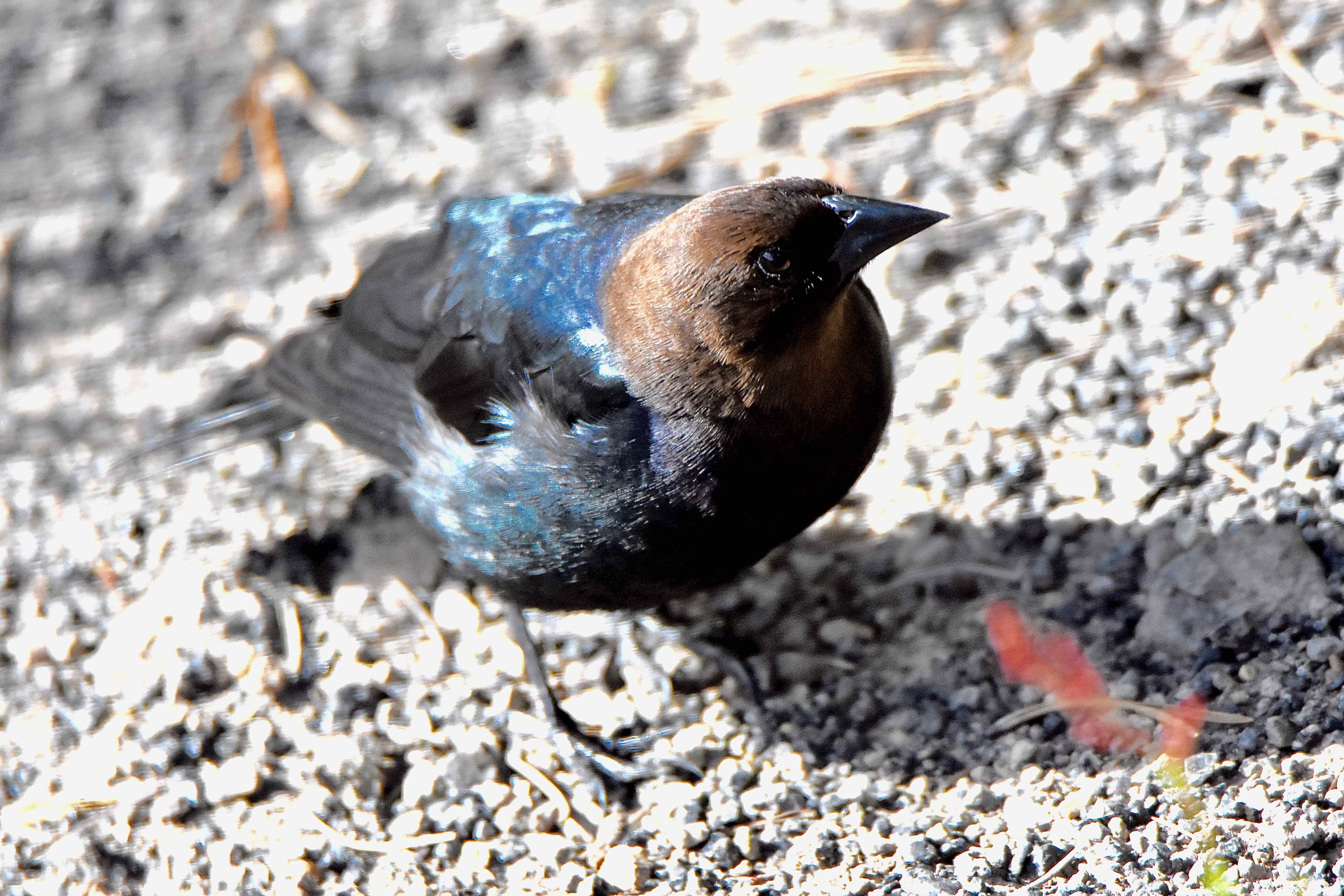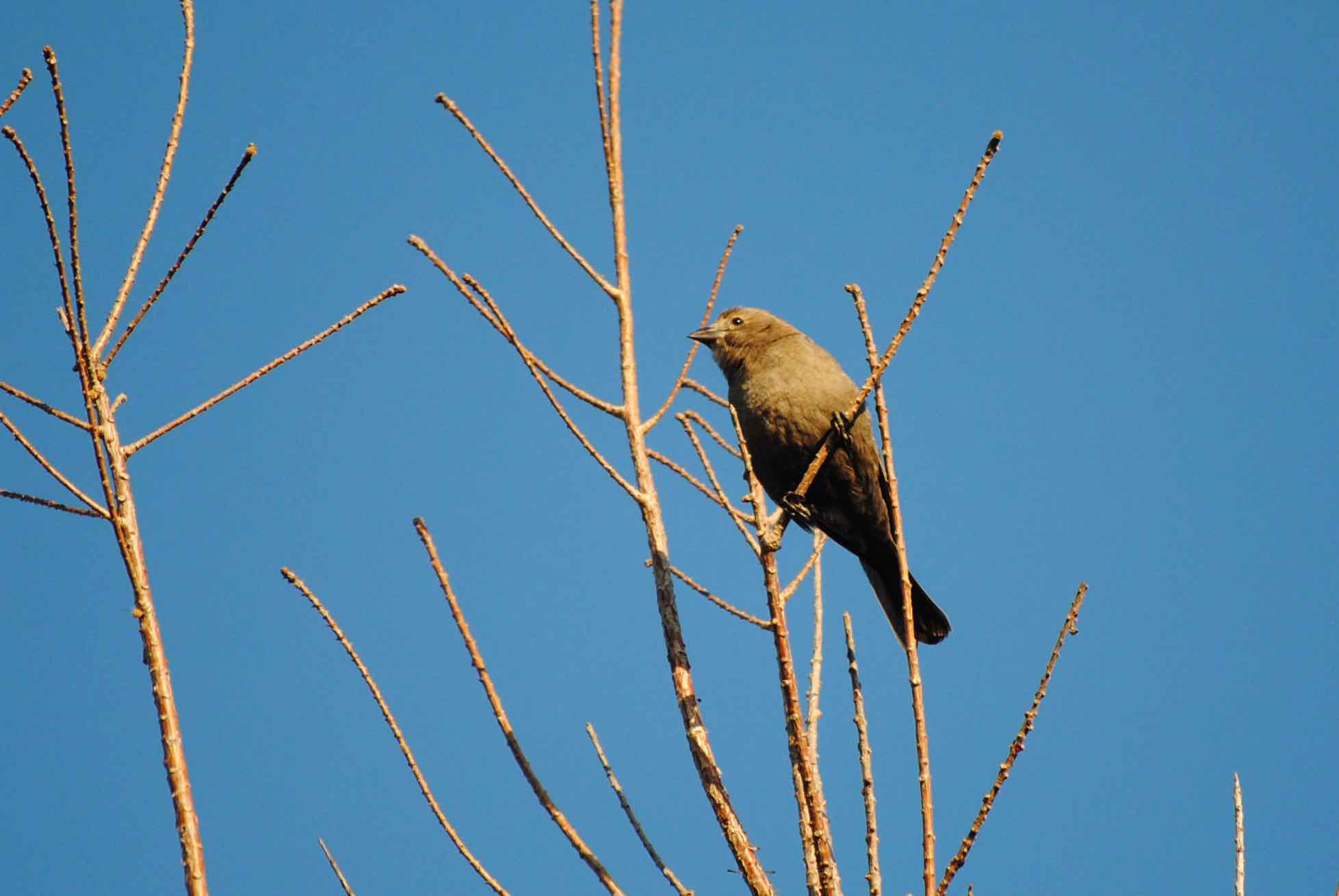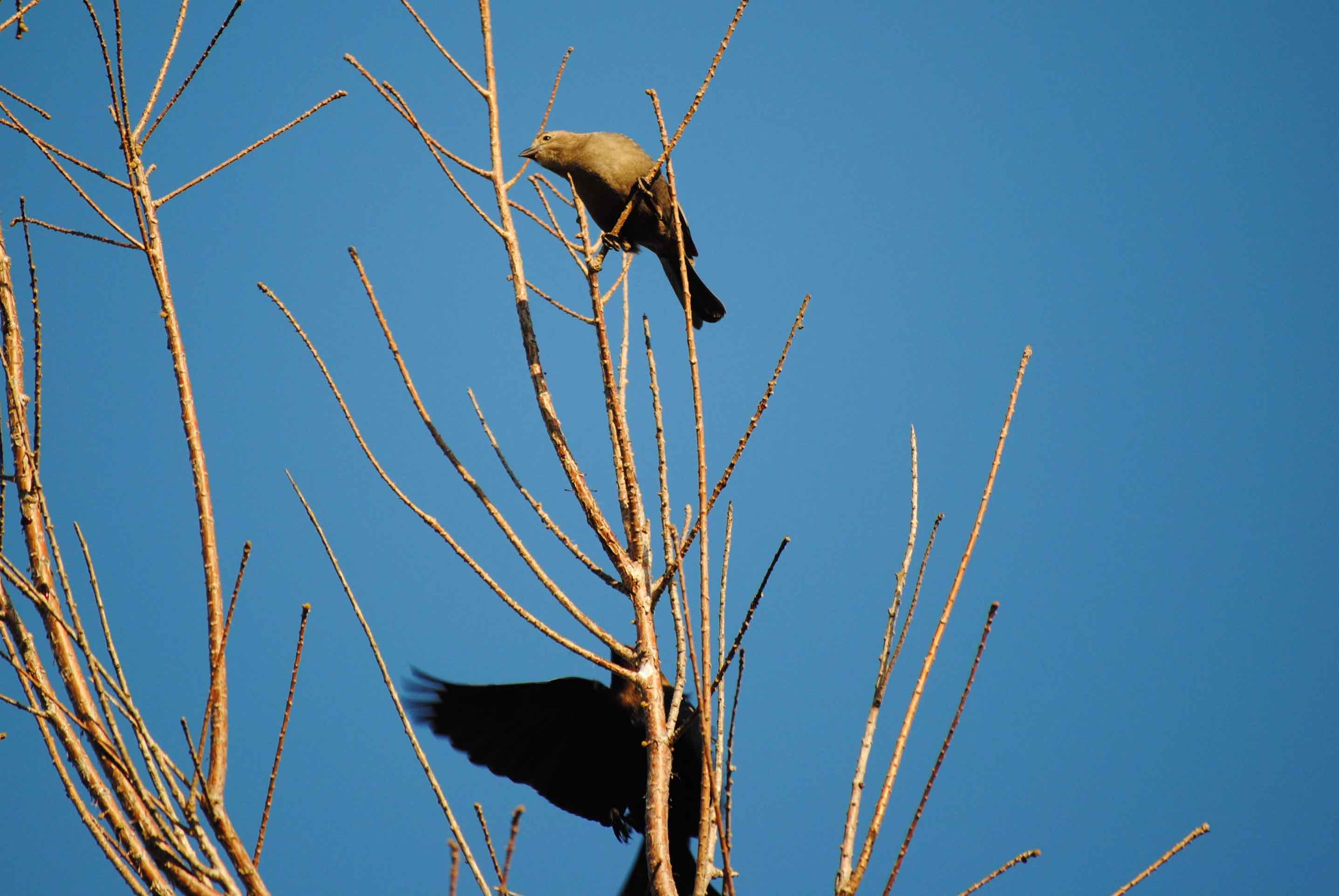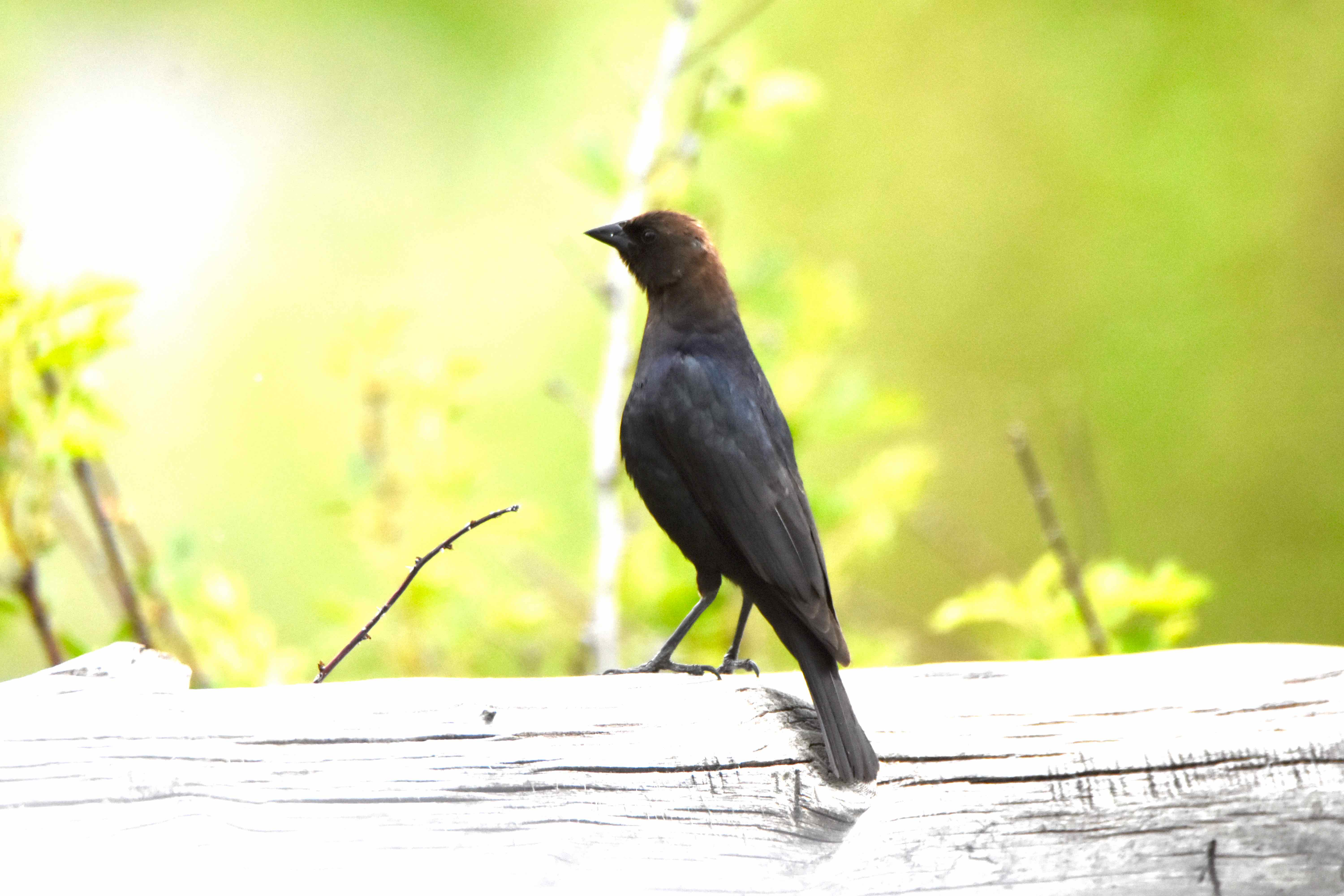
Brown-headed cowbird, photographed at Yellowstone National Park, Wyoming, in June 2017.
Cowbirds might be the worst parents of the avian world. While other bird species will "dump" excess eggs in the nests of others of their kind, only the cowbird relies on it as its sole means of rearing young. Thing is, cowbirds don't nest at all, so they target those of other species, often warblers.
And with devastating results for the hosts. Whole families can be wiped out by the voracious demands of a single hatched cowbird egg. So with that introduction, meet the brown-headed cowbird, Molothrus ater, one of three cowbird species. It's a winter visitor to most of Florida, but can be found year-round in the northern part of the state. Even in South Florida, it's becoming something of a permanent resident rather than a seasonal "guest." Its year-round range extends across much of the eastern and central United States, south into Mexico and along the Pacific Coast to Puget Sound. It's a summer visitor to the rest of the country and a good chunk of Canada.
It was first spotted in Florida's Panhandle in the mid-1950s and has slowly moved southward ever since. It's fairly common as a breeder as far south as the Tampa Bay area on the Gulf Coast and Brevard on the Atlantic, and scattered farther south. State officials expect it eventually to move into the Keys.
The theory behind the egg-dumping strategy is simple: rather than spending energy building a nest and raising young, female cowbirds, including the brown-headed, concentrate on producing eggs. Lots of them. As many as three dozen eggs in a single season. A single clutch can have between one and seven eggs, but only one will be dropped in any single nest. Cowbirds will time their dump when the female of the host species is laying her own eggs, minimizing the chance that the imposter will be discovered. The cowbird will remove or damage one of the host's own eggs and replace it with her own. The process is called parasitic brooding. Some species will detect the imposter egg and reject it, either by pecking it or throwing it out of the nest. Some species will detect it after its hatched, but the "foster parents" will be too small to remove the imposter. Most will fall victim to ruse, with deadly consequences for their own kind.
Brown-headed cowbird eggs require 10 to 12 days of incubation before hatching, and eight to 13 days of care thereafter before fledging. The young cowbirds grow faster and larger than the host's own and demand more food and attention. They'll often roll the host's eggs out of the nest. The parents might be literally worked to death trying to sate the appetite of the demanding interloper. Brown-headed cowbirds have been known to target the nests of as many as 220 species, some of which are endangered. Cowbirds have been seen as contributing to the declining numbers of several, including Kirtland's warbler. Habitat destruction by us humans is also a major factor.
Cowbirds tend to target the nests of smaller song birds. According to the Florida Fish and Wildlife Conservation Commission, brown-headed cowbirds could "jeopardize the breeding population of the black-whiskered vireo, Florida prairie warbler, Cuban yellow warbler, Florida grasshopper sparrow, and Cape Sable seaside sparrow."
Their strange name comes from their habit of following first buffalo, then domesticated cattle as they graze. The bovines would stir up insects, which the cowbirds would pick off. That also played a role in their strange lifestyle. According to the Cornell Laboratory of Ornithology, it's believed that their need to keep up with roaming herds of buffalo (technically bison) either caused the need to adopt a parasitic approach to rearing young or gave them the freedom to do so. They are birds of open terrain — fields and meadows — and forest edges. Seeds are a major component of their diet.
They are small birds, eight or nine inches long, with a wingspan of more than 14. Males have a brown head and and black, iridescent body. They can be confused with grackles, but their short, triangular bills easily separate the two. Females are dull brown all over.
Florida is home to a second species of cowbird, the shiny cowbird, Molothrus bonariensis, which has made its way from the Caribbean to our fair shores in the relatively recent past. It's also a brood parasite, and it's been implicated in the near-extinction of several species in the Caribbean. Male shiny cowbirds are a glossy black all over; females are a dull brown, similar to the brown-headed cowbird. The third species is the bronzed cowbird, Molothrus aeneus, but its range only extends as far east as Louisiana.
Brown-headed cowbirds are members of Icteridae, the blackbird family.



